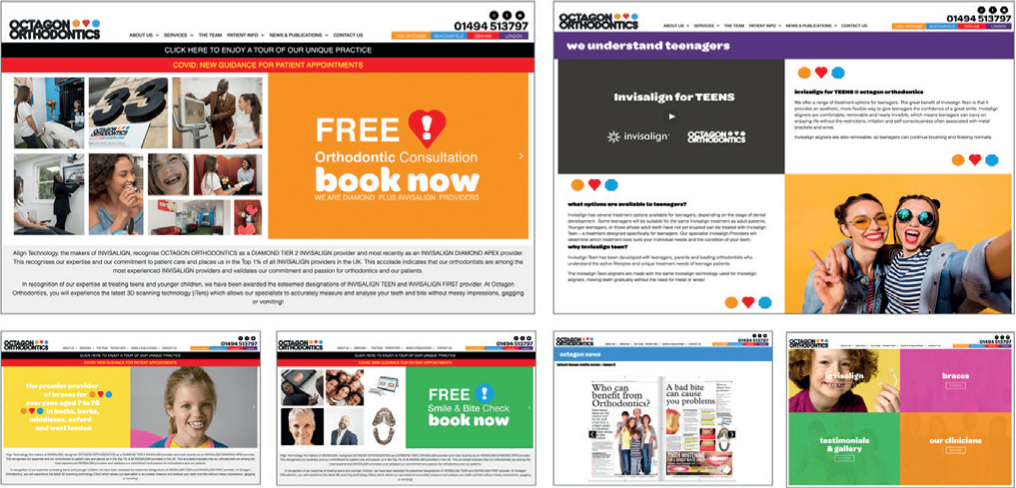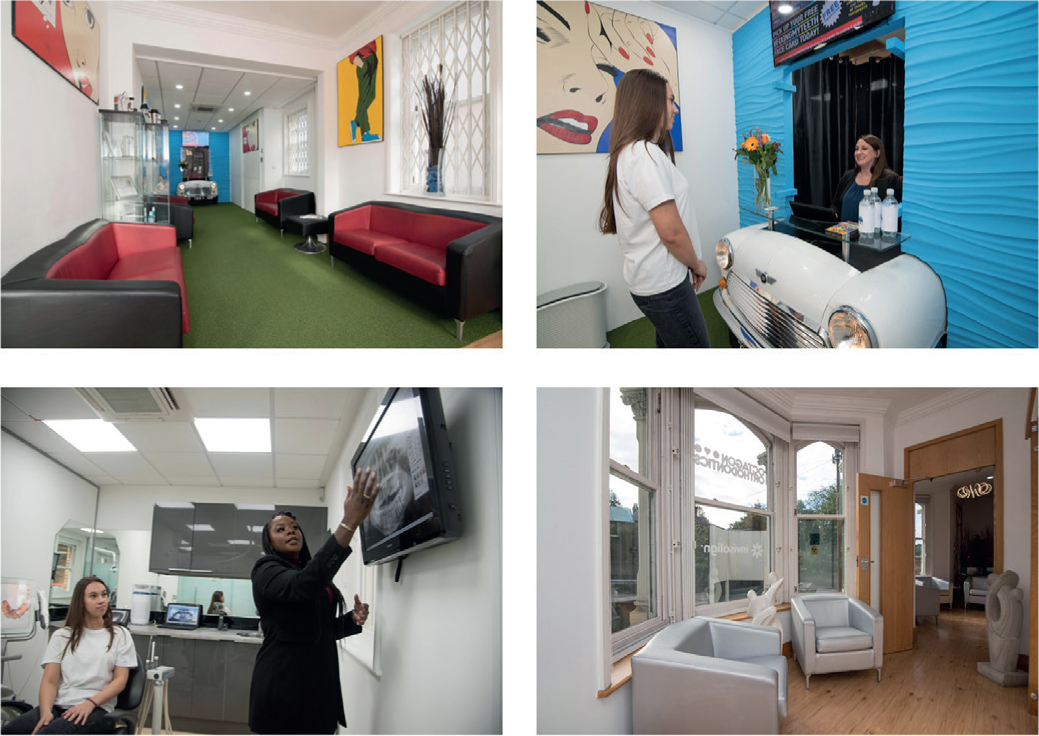Article

In 1999, at a business development meeting in Glasgow organized by 3M Unitek, I proclaimed to my specialist orthodontic colleagues, the need to build private incomes while fulfilling our NHS orthodontic contracts. My rationale had always been that the NHS part of my practice was the fundamental building block, while my private practice was a lucrative business opportunity.
At the time, we assumed that government contracts did not usually follow commercial protocols, but were subject to changes, which would almost certainly be outside any orthodontist's control. It did not come as a surprise in 2018, when commissioning for new NHS service contracts arrived with little fanfare in the South East. We were all confused, bewildered and shocked in equal measure by the application parameters and protocols. The end result for me was, that after 21 years of service to the National Health Service, I lost my NHS contract, accepted a 2-year wind down arrangement, and then became entirely reliant on my private income. My NHS contract was substantial, and the anticipated private income growth rate would not be fast enough to replace the loss.
Complex feelings of displacement, disappointment, frustration, helplessness and depression initially surfaced, followed by confusion, panic and desperation. Everybody affected by this catastrophic change had different emotional and psychological reactions, but I immediately understood that there was no time to grieve the loss, now was the time to save, revive or rescue my endangered orthodontic practices. My self-belief and innate confidence led me to think that I would almost certainly overcome any challenges emanating from this seismic shift, but time became the enemy. It takes time to build resilience or develop fortitude, so it's imperative to seriously invest in one's self, as an insurance against unpredicted troubles or adversity.
I had significantly underestimated the effects of these changes on my emotional, psychological and physical wellbeing. The stress was enormous and, at times, unbearable, so without shame or prevarication, I decided to recruit support from my trusted GP. I also engaged the services of a personal coach/mentor and subscribed to some online counselling services. This decision proved to be pivotal, because self-reliance was never going to be sufficient, and without a strong support structure, failure was a definite possibility. There should be no shame when seeking help and I would encourage all my colleagues to enthusiastically employ a philosophy of self-care.
I felt the weight of responsibility for my faithful, hardworking and loyal staff who had worked tirelessly with me for many, many years. Each and every one of them was going through similar feelings and emotions. The practice had been their passion, home, source of job satisfaction and security in some cases for decades, but there were absolutely no guarantees for anyone from this point onwards. Surely, we would not need all 35 staff to run a private practice, which could only at best generate 50% of the previous turnover – initial calculations pointed to 11 as the magic number.
Hindsight is a great thing! Perhaps I should have spent much more time building private income, rather than stressing over fulfilment of NHS contracts and targets. My advice to anybody looking to build an orthodontic practice in the UK today is simple – put the vast majority of your efforts into building on private income! Income from the NHS should be viewed as supplementary, as opposed to foundational.
My survival instinct had kicked in and I deployed an action plan that I can summarize as ‘slimming down and gearing up’. The knee-jerk reaction during times of crisis is often to reduce expenses, but this comes with a health warning; there is a limit to how many deep cuts can be applied to fixed or variable practice costs, without negatively affecting efficiency and performance. Private practice needs investment or cash flow to grow, gain increased visibility and surge treatment uptake.
Just as we initiated intricate plans to rebalance the practice, the pandemic started in March 2020. During this dreadful period, our private income plummeted and access to new patients was reduced to zero. The entire viability of my business was called into question, and all hope was once again nearly lost. Additional borrowing through the Corona Business Interruption Loan (CBIL) was used to keep the business afloat while we went through a series of three painful lockdowns. By June 2021, in the post lockdown phase, there was a surge in the uptake of private treatment as people who felt they had been caged for over a year were now released, and able to express their self-determination once again.
The comfortable bulk-buying habits that accompanied previously held NHS contracts now had to be replaced with a ‘just in time’ acquisition philosophy in order to reduce stock levels, wastage of materials, duplication of resources and to slash outgoings. A difficult decision was made to rationalize and shrink the practice footprint from 10 chairs to only six, and sadly to reduce 35 staff to 11. Work also included careful forensic analysis of all bank statements to detect any ‘unnecessary’ and avoidable outgoing payments and subscriptions. Other measures taken included switching telephone services, energy supply companies, re-tasking staff, changing appointment schedules, reducing unnecessary patient contacts and procedures.
Losing your NHS contract comes with a loss of direct referrals from general dental practitioners. So, what other referral sources can you rely on? People mention ‘word of mouth’, which no longer carries the same traditional meaning of reliance on patients broadcasting good news on your behalf. Social media has displaced this old paradigm (Figure 1). A comprehensive analysis was carried out to determine the needs of the private market for children, teenagers and adults. Included in this was an appraisal of things we were doing right, as well as areas for improvement and differentiation. Marketing and advertising had always been one of our strengths, but we redoubled efforts to further boost patient recruitment by revamping the practice website and commissioning high-profile social media campaigns (Figure 2). The objective of growing private income requires a significant increase in the visibility and accessibility of the services you offer.


Concerted efforts have been made to redesign or revamp the internal facilities and hospitality services at the practice (Figure 3). I need them to be synchronous with parallel five-star experiences seen in many other industries. Differentiation through further upgrades of the practice environment would create a buzz, ‘feel good factor’ or luxurious experience for new or returning patients, which in turn would support our focus on excellence and ‘private only’ orthodontic services.

Being an early adopter of technology meant that we had invested in six iTero scanners over the years, eliminating the need for impressions and potentiating clinical efficiency; we promptly made our scanning services known to our referral bases and patient cohorts. We boosted staff efficacy by adopting technology to support hybrid working and enable a multi-tasking culture that resulted in a more potent work force, despite the reduced numbers. Examples include issuing administrative staff with laptops, mobile telephony and useful applications such as Zoom, Team Viewer secure dial in, DocuSign and Adobe Acrobat for a seamless home–office experience.
Technology also enabled an improved patient experience, which included dental monitoring, the ability to schedule appointments via the website or cellular messaging, review appointments via Zoom and increased direct contact with clinicians for problem solving or reassurance. We drastically reduced the need for unnecessary appointments by implementing a quick response approach to queries and enquiries using a mixture of these technologies.
Our practice philosophy was further enhanced by focusing on being purveyors of ‘beautiful smiles’ with reduced emphasis on types of braces. Strategic co-branding with successful products has proven to be beneficial especially, with Invisalign, which has its own following and market share. Upskilling yourself and your staff to enable the provision of all types of orthodontic treatments works to your advantage because the private market is not sympathetic towards ‘one-trick ponies’. ‘Swift Smile Service’ is our creative brand, which promotes greater accessibility, affordability and fresh visibility for fixed-appliance services, further differentiating ourselves from competitors and local orthodontic providers.
We have adopted an innovative pricing strategy centred around patient affordability. Patients tell us how much they can afford per month so that we can find them a matching payment plan. This results in an improved cash flow with greater uptake of treatment, and greater client satisfaction. Lowering your prices or engaging in local price wars will not increase treatment uptake or revenue. Establishing the correct price should depend on your expense levels, associated costs and estimated time for delivering a specific treatment because the profit equation should always apply (profit = cost - expenses/time). Comparative pricing could be dangerous because expenses vary from one business to another.
Meaningful competitive analysis must be carried out, and should inform your ability to differentiate your service offering. In today's orthodontic market, competitors are polymorphic and include online direct-to-patient services, dental practitioners, dental tourism, NHS service providers, private orthodontic and multi-specialist clinics. It is not necessary or healthy to be at war with any of these stakeholders, but an understanding of the local dynamics should provide valuable insight as to where you might position yourself in the market.
Today, as we continue to breathe new life into our practices, we find ourselves facing the cost-of-living crisis, which started in 2021, when prices of essential goods began increasing faster than household incomes. The result is a fall in real income, which will ultimately affect the population's ability to pay for private orthodontic services over the next few years. Lessons learned from the loss of NHS contracts and the pandemic should come in handy for orthodontic practice owners who should now be actively engaged in strategic planning and business process re-engineering.
A word is enough for the wise: build resilience, recruit help and plan for success because there is life beyond the NHS contract.
